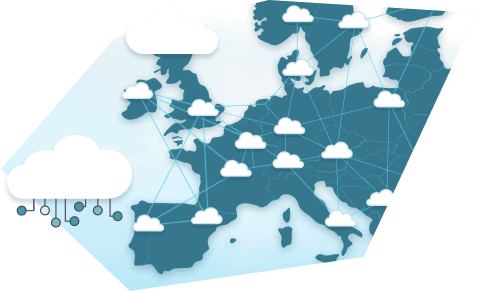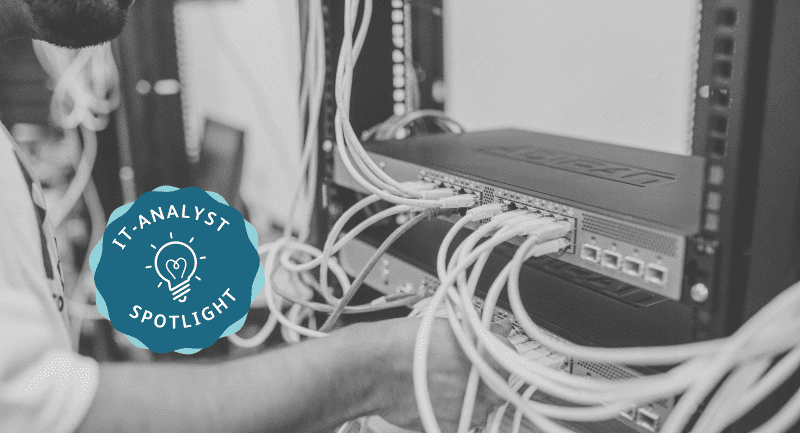
REWE as a German AWS?
How the provider landscape is reshaping itself around Public Edge Services
How is the cloud provider landscape changing as Edge Computing becomes increasingly relevant? Which services are in demand and which provider groups could benefit from this trend? Our author, IT analyst Dr. Andreas Stiehler, addresses these questions in the latest blog post. His conclusion: The Cloud Edge Provider Landscape is on the move. The increasing interest in Public Edge Services is creating a new growth market with opportunities for new provider groups to enter the market. Its development has already begun, time to position yourself.
The Edge trend is creating a new growth market for Public Edge Services
As I stated in my last blog post with a view to the Edge year 2024, Edge Computing is still a tender plant and an Edge boom is not expected in the coming months. Nevertheless, the topic is becoming increasingly important. This is supported by the long list of factors that point to a significant revival in demand for computing resources at the network edge – from the growing maturity of AI technologies (see also “Edge AI = the next level of digitalization” ), the exploding flood of data due to ubiquitous video cameras and sensors, and the increasing demand for latency-sensitive applications as part of Smart Factories.
In real-time applications for controlling machines and systems, for example, the tolerance for latency – i.e. delays in data transmission – is in the single-digit millisecond range. This means that any company that wants to seriously tackle the transition to Smart Factories should ensure that data is processed no more than 50 to 90 km away. Similar requirements apply to intelligent shelves in retail, modern medical applications, e.g. for early cancer detection, Smart Cities or autonomous vehicles, right through to streaming and video games.

In companies that already use latency-sensitive applications today, data has often been processed “on premise”, i.e. via local servers/data centers that are operated in-house on their own premises. However, such a “private edge” approach is not very efficient or effective – and is therefore more of a makeshift solution than a sustainable model. After all, unlike specialized data centre operators, companies cannot scale. At the same time, the demands on data center operations are increasing, also driven by the Edge trend. In addition, most companies cannot (and do not want to) afford to “second” their few IT specialists to operate the IT infrastructure.
The demand for infrastructure services provided locally by specialized data center operators in the vicinity of industrial parks and metropolitan areas is expected to increase noticeably in the coming months and years. This should also cause movement in the Cloud/Edge Provider Landscape. Finally, a new market for Public Edge Services is maturing and needs to be tapped into.
It is important to note at this point that Public Edge and Public Cloud Services cannot be looked at isolated from each other. Both forms of offerings are justified and complement each other. For example, the implementation of innovative AI application scenarios requires a combination of centrally and decentrally operated computing resources within a Cloud Edge Continuum – as explained in the blog post on edge AI, among other things. Providers who want to participate in the growth market should therefore ensure that companies can manage Edge and Cloud Computing resources from a single source.

European Cloud Providers such as OVHcloud expand Edge network
But who exactly are we talking about here? At this point, I would like to refer you to a highly interesting study on “Business potential and business models for edge investments” that is well worth reading. It was compiled by GIMI Research in collaboration with the eco Association of the Internet Industry and the Cologne University of Applied Sciences and published in 2022. The analyses, which are based on 20 in-depth interviews with experts, among other things, demonstrate the business potential of Edge Computing not only from a user perspective, but also and especially from a provider perspective. This shows that the circle of potential providers of Public Edge Services extends far beyond the usual suspects (hyperscalers, etc.).
The most important provider group from the perspective of the experts surveyed for the eco study (see chart) are ICT companies, most of which are already positioned as Cloud Providers, already operate data centers in this role and are now further expanding this network. For example as a leading European Cloud Provider, OVHcloud is working intensively with gridscale to build a Europe-wide network of local zones, i.e. local data centers for the provision of Public Edge Services – see our last blog post.
Source: Study on “Business potential and business models for edge investments“, GIMI Research, June 2016, N=20 qualitative expert interviews

Will REWE soon be competing with Amazon in the Public Edge market?
Another potential provider group are large, supra-regional companies that have a local data center network to support their business model and could also use this to offer Public Edge Services in the future. For example, the retail group REWE could play an important role in the emerging Public Edge market in the future. The statements made by Dr. André Marburger, CTO of REWE Systems GmbH, in an interview with the authors of the eco study show that this idea is not just a pipe dream.
“In general, it would be conceivable for REWE to act as an extended IT service provider that processes certain, non-REWE-specific workloads on its systems. However, this is not yet attractive because the use cases are lacking. The considerations are therefore more in the direction of a private cloud with self-service. Food retailers already host third-party services, e.g. for parcel services and similar. In this respect, the provision of compute power for a shared edge approach would also be a possible scenario, if there is substantial demand.”
It is also worth noting that REWE would be following in Amazon’s footsteps with such a strategy. While the online retail pioneer has become a leading player in the Public Cloud market, the retail chain with its distributed IT could play an important role in the Public Edge business.
Speaking of Amazon: Of course, hyperscalers such as Amazon Web Services are also positioned in this market with their own offerings. However, they are not doing this because the Edge Computing segment appears so attractive, but rather because their customers demand it. In other words, the small-scale Edge Computing business is not in the hyperscalers’ DNA. They will only accompany the topic to the extent that appears necessary to retain major customers.
However, it is unlikely that they will be at the forefront of development with innovative and customer-friendly edge solutions.
In real-time applications for controlling machines and systems, for example, the tolerance for latency – i.e. delays in data transmission – is in the single-digit millisecond range. This means that any company that wants to seriously tackle the transition to Industry 4.0 should ensure that data is processed no more than 50 to 90 km away. Similar requirements apply to intelligent shelves in retail, modern medical applications, e.g. for early cancer detection, smart cities or autonomous vehicles, right through to the latest video games.
Good growth opportunities for local data center operators if they operate in a network
The situation is quite different for local data center operators, however, who can expect demand to increase as a result of edge trends. However, in order to be successful in the edge market in the long term, they should be able to guarantee that their customers can also obtain public edge services at other locations and from a central cloud if required and that these can be managed from a single source. To be able to provide such a comprehensive cloud/edge offering, they should work together with other data center operators or cloud providers in a functioning ecosystem. This is a topic that gridscale, as a provider of software solutions for managing hybrid cloud edge infrastructures, has been supporting and intensively promoting for several years.
Here are two references: The expert view of Markus Weber, Managing Director of Leitwerk AG, in the gridscale trend study “Edge in practice” shows how the edge market presents itself from the perspective of a local data center operator. The advantages for a local data center of connecting to the gridscale edge cloud ecosystem are shown in the partner story of the Swiss company hosttech, which is available for free download here.

Municipal administration: key position for public-edge offerings
Finally, local authorities also play an important role in the public edge market. On the one hand, they are potential customers themselves, for example with regard to the realization of so-called smart city applications (digital parking space management, etc.). As the first point of contact for locally based companies, they also have a genuine interest in the local availability of public edge services.
On the other hand, municipalities and municipal companies could also participate in the public edge market as providers themselves or create the framework conditions for the provision of public edge services.
The eco study devotes an entire chapter to the potential of edge computing for the Rhineland region. The role of local authorities will be examined from different perspectives – from the Dormagen city marketing and business development company to the St@rt Hürt start-up and technology center and the NRW data marketplace. In my view, a “must read” with plenty of food for thought for municipal administration.
Summary: The trial of strength in the public edge market has begun, strategies required!
In a nutshell: The demand for public edge services is likely to increase significantly in the coming months and years. The development of this attractive new growth market has already begun, and the circle of potential providers is not limited to the usual suspects. Large companies with distributed IT such as the REWE retail chain, local data center operators and local authorities also have the opportunity to get involved in this business.
However, setting up computing resources at the edge of the network and integrating them into a functioning cloud edge network does not happen overnight. Players who want to participate in the growing public edge market should therefore develop a public edge strategy today rather than tomorrow and create the conditions for its implementation. This also applies to (potential) customers, i.e. companies or SaaS providers (for example in the gaming environment) with a need for public edge offerings.
After all, it is clear that the realization of innovative applications or services that require an edge infrastructure on site is no longer just a dream of the future. The next stage of digitization is already underway.

Dr. Andreas Stiehler
As an IT analyst, author and consultant, Dr. Andreas Stiehler has been supporting research and consulting projects on digital change for more than 20 years. His core topics here are Digital Work &
Digital workplace, customer service in the digital transformation and the management of knowledge work(ends). With a doctorate in economics and a focus on behavioral economics, he is committed to taking a holistic view of digital change and placing a stronger focus on people.
Profile on LinkedIn
